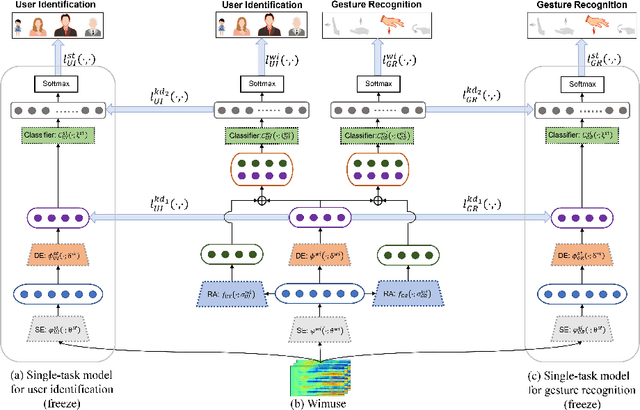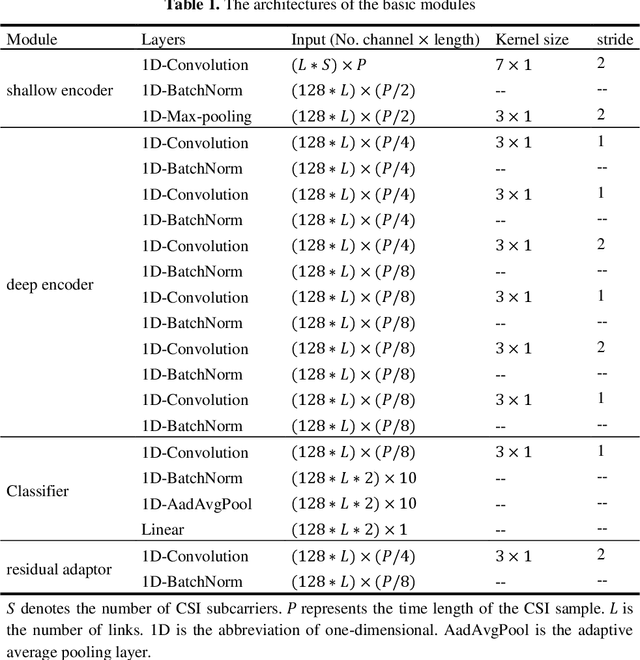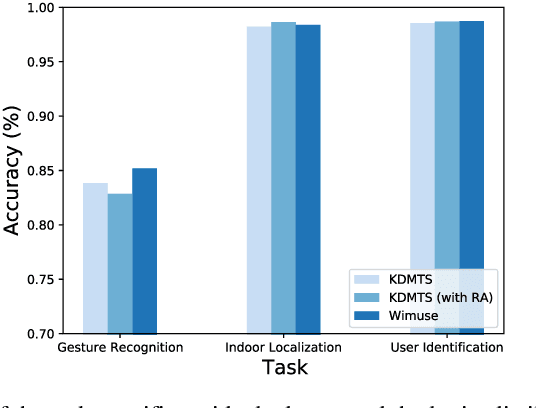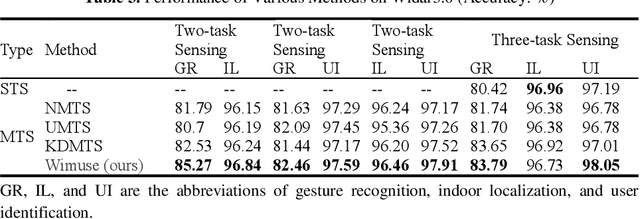Xie Zhang
Unlocking Interpretability for RF Sensing: A Complex-Valued White-Box Transformer
Jul 29, 2025Abstract:The empirical success of deep learning has spurred its application to the radio-frequency (RF) domain, leading to significant advances in Deep Wireless Sensing (DWS). However, most existing DWS models function as black boxes with limited interpretability, which hampers their generalizability and raises concerns in security-sensitive physical applications. In this work, inspired by the remarkable advances of white-box transformers, we present RF-CRATE, the first mathematically interpretable deep network architecture for RF sensing, grounded in the principles of complex sparse rate reduction. To accommodate the unique RF signals, we conduct non-trivial theoretical derivations that extend the original real-valued white-box transformer to the complex domain. By leveraging the CR-Calculus framework, we successfully construct a fully complex-valued white-box transformer with theoretically derived self-attention and residual multi-layer perceptron modules. Furthermore, to improve the model's ability to extract discriminative features from limited wireless data, we introduce Subspace Regularization, a novel regularization strategy that enhances feature diversity, resulting in an average performance improvement of 19.98% across multiple sensing tasks. We extensively evaluate RF-CRATE against seven baselines with multiple public and self-collected datasets involving different RF signals. The results show that RF-CRATE achieves performance on par with thoroughly engineered black-box models, while offering full mathematical interpretability. More importantly, by extending CRATE to the complex domain, RF-CRATE yields substantial improvements, achieving an average classification gain of 5.08% and reducing regression error by 10.34% across diverse sensing tasks compared to CRATE. RF-CRATE is fully open-sourced at: https://github.com/rfcrate/RF_CRATE.
WiFi-based Multi-task Sensing
Nov 26, 2021



Abstract:WiFi-based sensing has aroused immense attention over recent years. The rationale is that the signal fluctuations caused by humans carry the information of human behavior which can be extracted from the channel state information of WiFi. Still, the prior studies mainly focus on single-task sensing (STS), e.g., gesture recognition, indoor localization, user identification. Since the fluctuations caused by gestures are highly coupling with body features and the user's location, we propose a WiFi-based multi-task sensing model (Wimuse) to perform gesture recognition, indoor localization, and user identification tasks simultaneously. However, these tasks have different difficulty levels (i.e., imbalance issue) and need task-specific information (i.e., discrepancy issue). To address these issues, the knowledge distillation technique and task-specific residual adaptor are adopted in Wimuse. We first train the STS model for each task. Then, for solving the imbalance issue, the extracted common feature in Wimuse is encouraged to get close to the counterpart features of the STS models. Further, for each task, a task-specific residual adaptor is applied to extract the task-specific compensation feature which is fused with the common feature to address the discrepancy issue. We conduct comprehensive experiments on three public datasets and evaluation suggests that Wimuse achieves state-of-the-art performance with the average accuracy of 85.20%, 98.39%, and 98.725% on the joint task of gesture recognition, indoor localization, and user identification, respectively.
 Add to Chrome
Add to Chrome Add to Firefox
Add to Firefox Add to Edge
Add to Edge